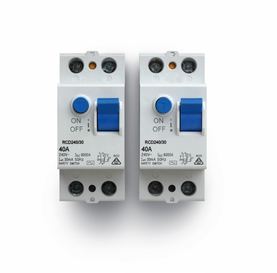Laws introduced in 2009 require all home sellers (before sale) and landlords to install at least two RCDs, protecting all power points and lighting circuits.
What are RCDs?
A residual-current device (RCD) is an electrical wiring device that disconnects a circuit whenever it detects that the electric current is not balanced between the energized conductor and the return neutral conductor.
Why are two RCDs required?
By installing at least two RCDs, the property’s circuits can be divided evenly. This ensures some light and power remain if one RCD operates and also minimizes faulty operation from appliances which have low-level leakage current.
What are my obligations and rights?
Everyone has the right to live in a safe environment. The following may apply to you in relation to RCD compliance:

- If you are planning to sale your property you must ensure that you have at least two RCDs protecting all power points and lighting circuits
- Landlords must arrange at least two RCDs to be installed at their rental premises. Tenants and property managers should also check that at least two RCDs have been installed
Penalties of up to $15,000 for individuals and up to $100,000 for a body corporate may apply if the regulations are breached.
How do I test my RCD is operating correctly?
Testing of RCDs should be undertaken every three months by pushing the test button, which simulates an earth leakage and indicates whether or not the RCD is operating correctly. For full details on RCD testing see the department of commerce website.
All properties constructed from the year 2000 should already have two RCDs fitted. However, if there is any doubt as to the presence or functioning of the RCDs at your home, a licensed electrician should be engaged.
